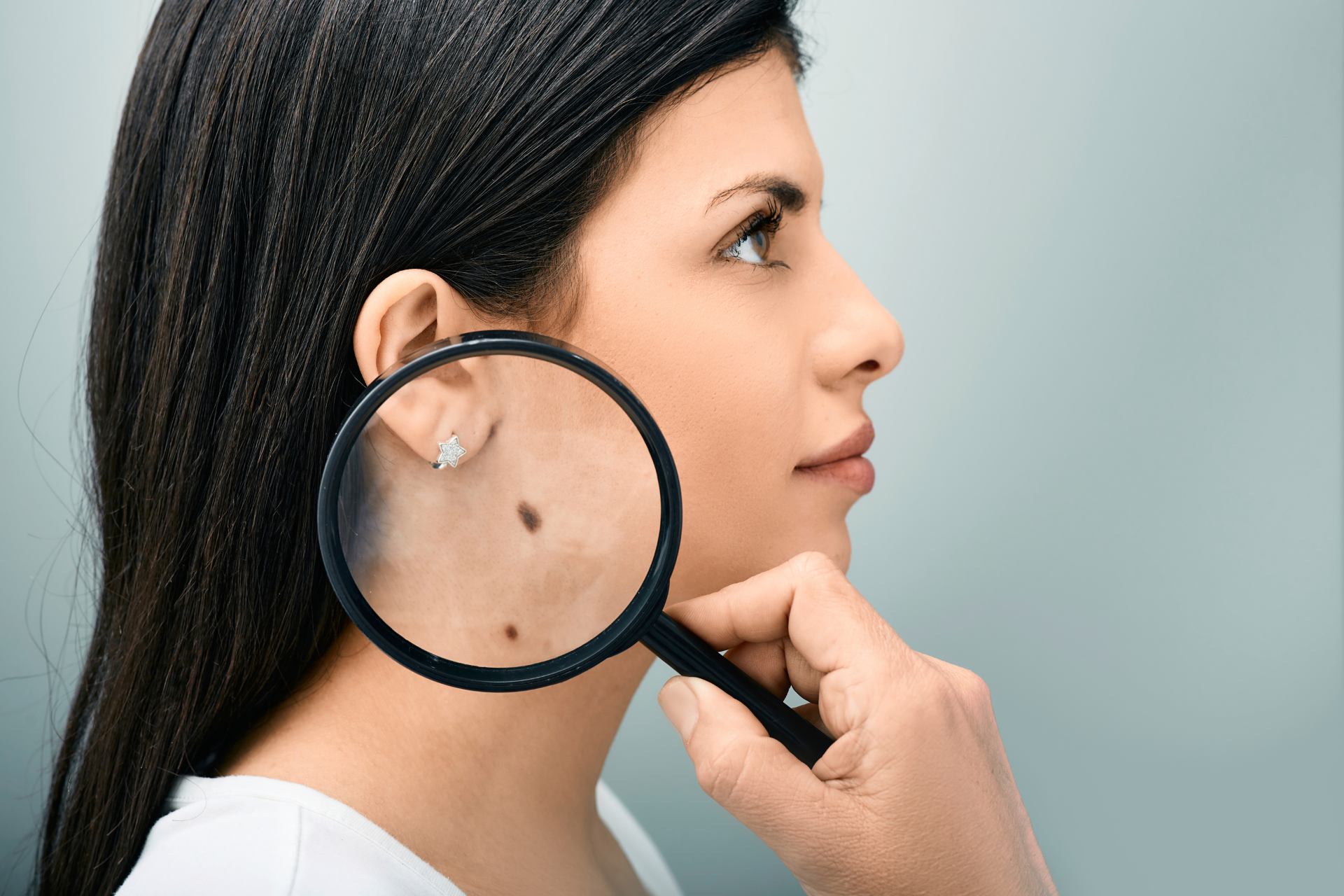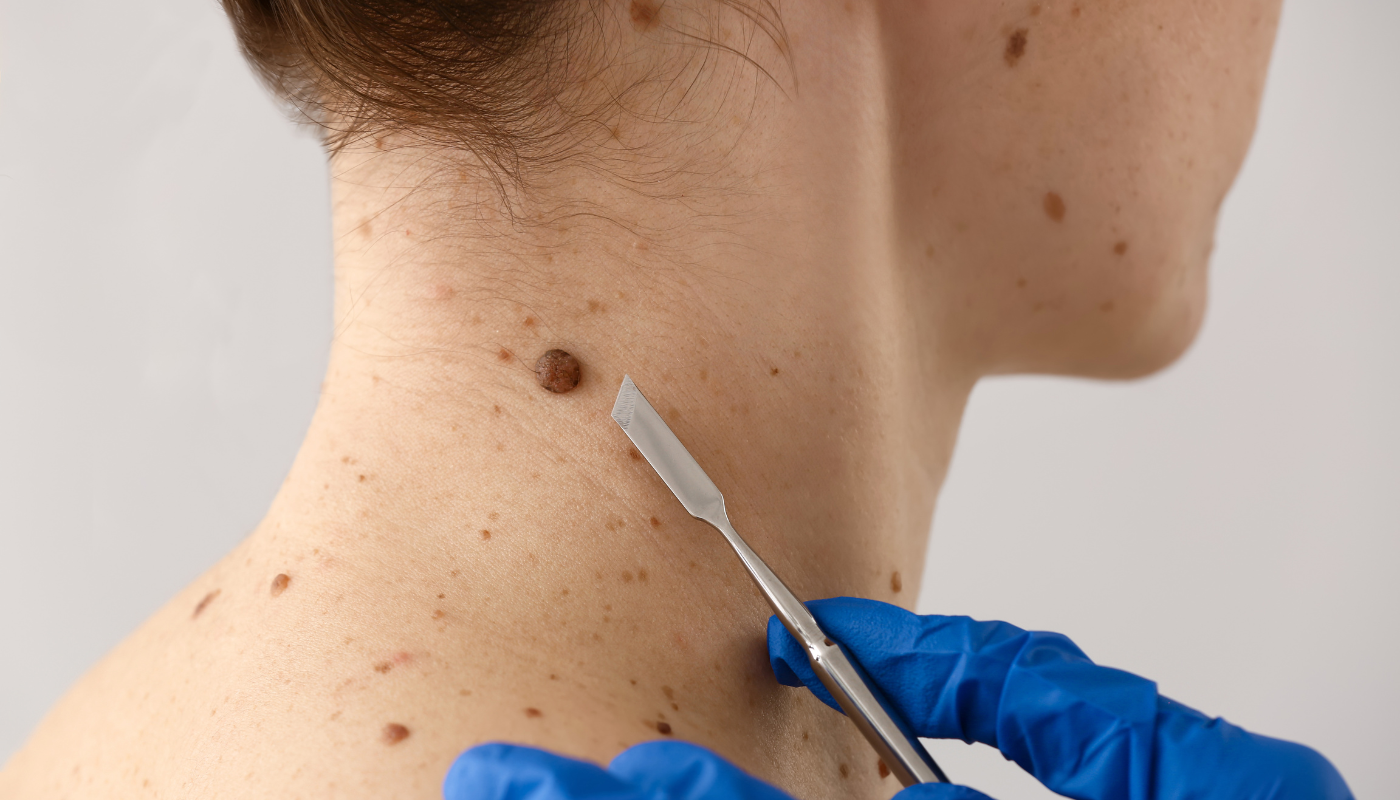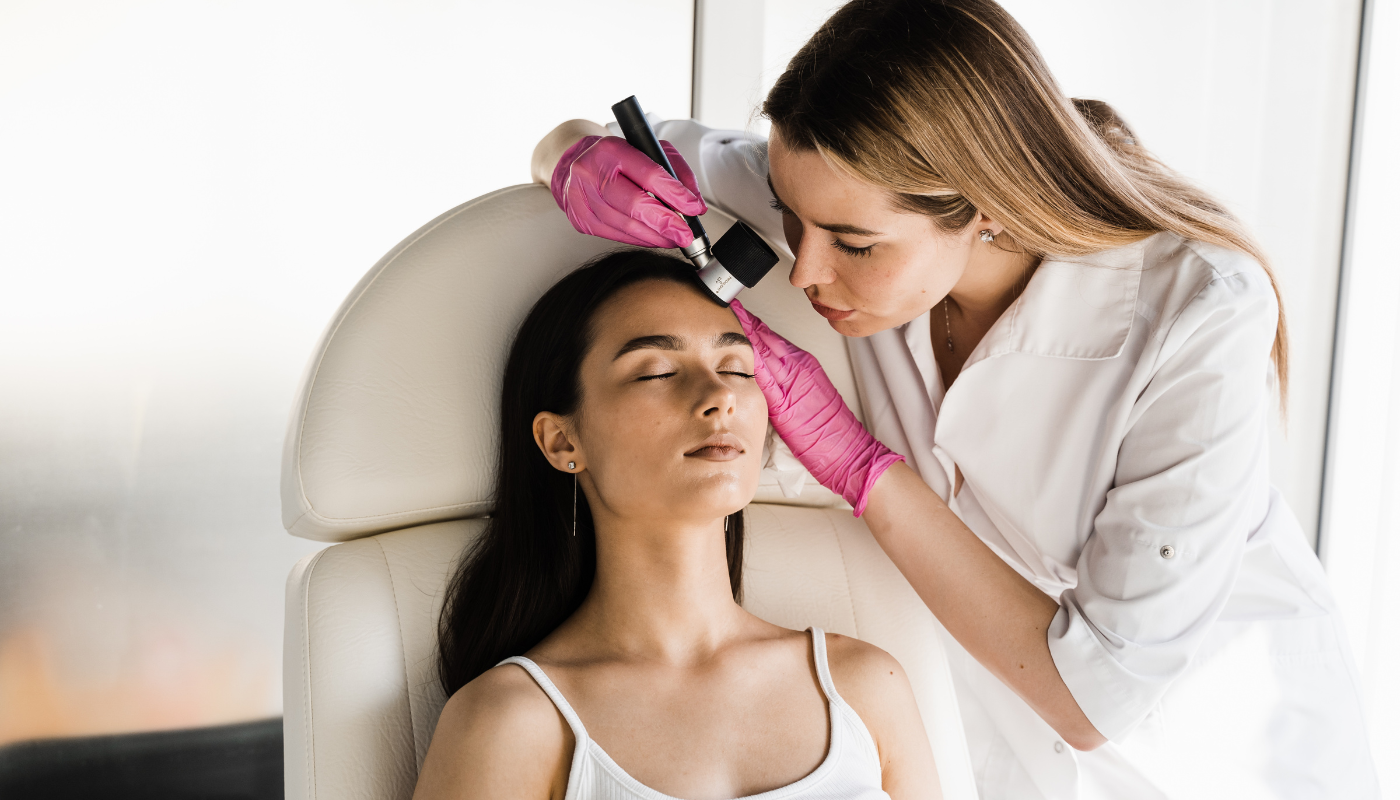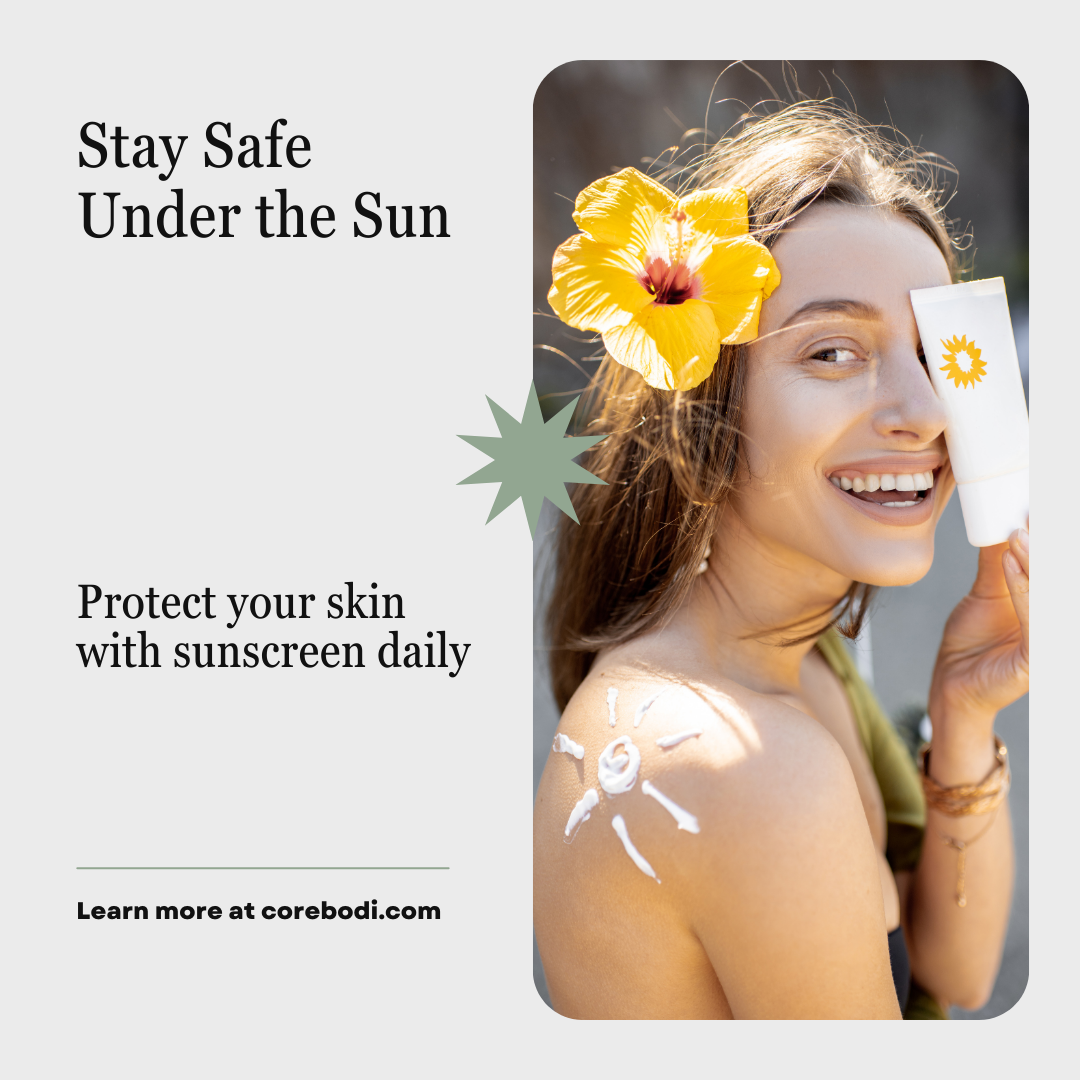The Four Types of Skin Cancer?
Main Types of Skin Cancer

The four most common types of skin cancer are:
- Basal cell carcinoma: This is the most common type of skin cancer and usually occurs on areas of skin that are exposed to the sun, such as the face, neck, and arms.
- Squamous cell carcinoma: This type of skin cancer often occurs on areas that have been exposed to the sun, such as the face, ears, neck, and arms.
- Melanoma: This is the most dangerous type of skin cancer and can spread rapidly to other parts of the body. It often appears as a dark, irregularly shaped mole that changes in size, colour, or texture.
- Merkel cell carcinoma: This is a rare but aggressive type of skin cancer that occurs most commonly in older adults and in areas of the skin that have been exposed to the sun.
Early detection and treatment of skin cancer is important, so it's important to be aware of changes in your skin and to have any suspicious moles or spots checked by a doctor.
Basal Cell Carcinoma
Basal cell carcinoma (BCC) is a type of skin cancer that develops in the basal cells, which are found in the deepest layer of the epidermis (the top layer of skin).
BCC is the most common form of skin cancer and typically appears on areas of the skin that have been exposed to the sun, such as the face, neck, and arms.
However, it can occur anywhere on the body.
BCC usually looks like a raised, waxy bump or a flat, pink patch of skin. It may also have a pearly or shiny appearance, and there may be visible blood vessels on the surface.
BCC rarely spreads to other parts of the body, but it can invade nearby tissues if left untreated.
The main causes of BCC are exposure to ultraviolet (UV) radiation from the sun or tanning beds. People who have fair skin, light-coloured hair and eyes, and a history of sunburns are at a higher risk of developing BCC.
Other risk factors include a weakened immune system and exposure to certain chemicals.
Treatment for BCC typically involves removing the cancerous cells, either through surgery or other methods such as radiation therapy or topical medications. The choice of treatment depends on the size, location, and stage of the cancer.
Regular skin exams and taking steps to protect the skin from UV radiation can help prevent BCC from developing or returning.
Squamous Cell Carcinoma
Squamous cell carcinoma (SCC) is a type of skin cancer that affects the cells that make up the outer layer of the skin.
SCC often appears as a raised, scaly or crusty lesion on areas of the skin that have been exposed to the sun, such as the face, ears, neck, hands, and arms.
However, it can also occur on other areas of the body.
SCC can grow and spread quickly, and if left untreated, it can invade deeper layers of skin, as well as nearby tissues and organs.
In some cases, it can also metastasize, or spread to other parts of the body, such as the lymph nodes or internal organs.
The main cause of SCC is exposure to ultraviolet (UV) radiation from the sun or tanning beds. Other risk factors include fair skin, a history of sunburns, a weakened immune system, and exposure to certain chemicals.
Treatment for SCC typically involves removing the cancerous cells, either through surgery or other methods such as radiation therapy or topical medications. The choice of treatment depends on the size, location, and stage of the cancer.
Regular skin exams and taking steps to protect the skin from UV radiation can help prevent SCC from developing or returning.
Melanoma
Melanoma is a type of skin cancer that develops from melanocytes, the cells that produce the pigment melanin, which gives colour to the skin, hair, and eyes.
Melanoma can occur anywhere on the skin, but it most commonly appears on areas that have been exposed to the sun, such as the face, neck, arms, and legs.
Melanoma can also occur in areas that are not exposed to the sun, such as the soles of the feet, palms of the hands, and under the nails.
It can be characterized by an unusual mole or pigmented lesion, which can be asymmetrical, irregular in shape, have uneven colour, and a diameter larger than a pencil eraser.
Melanoma can metastasize, or spread to other parts of the body, including the lymph nodes, lungs, liver, brain, and bones, which can make it more difficult to treat.
The main cause of melanoma is exposure to ultraviolet (UV) radiation from the sun or tanning beds.
Other risk factors include having fair skin, a history of sunburns, a family history of melanoma, and having many moles or unusual moles.
Treatment for melanoma typically involves removing the cancerous cells through surgery, and may also include chemotherapy, radiation therapy, immunotherapy, or targeted therapy, depending on the stage and location of the cancer.
Regular skin exams and taking steps to protect the skin from UV radiation can help prevent melanoma from developing or returning.
Merkel Cell Carcinoma
Merkel cell carcinoma (MCC) is a rare and aggressive type of skin cancer that develops from Merkel cells, which are found in the hair follicles and play a role in sensing touch.
MCC typically appears as a firm, painless, and rapidly growing lump or bump on the skin, usually on sun-exposed areas such as the head, neck, and arms.
MCC is considered aggressive because it can grow and spread quickly, and it can also metastasize to other parts of the body, including the lymph nodes, lungs, and liver.
It is more likely to affect people with weakened immune systems, such as those who have had an organ transplant, HIV/AIDS, or leukemia.
The main cause of MCC is thought to be exposure to ultraviolet (UV) radiation from the sun, although other risk factors may include having fair skin, being older, and having a history of other skin cancers.
Treatment for MCC typically involves surgery to remove the cancerous cells, and may also include radiation therapy, chemotherapy, or immunotherapy, depending on the stage and location of the cancer.
Because MCC is rare and aggressive, it is important to have any suspicious lumps or bumps on the skin examined by a healthcare professional.
Regular skin exams and taking steps to protect the skin from UV radiation can also help reduce the risk of developing MCC.
More Skin Tips.
CoreBodi













